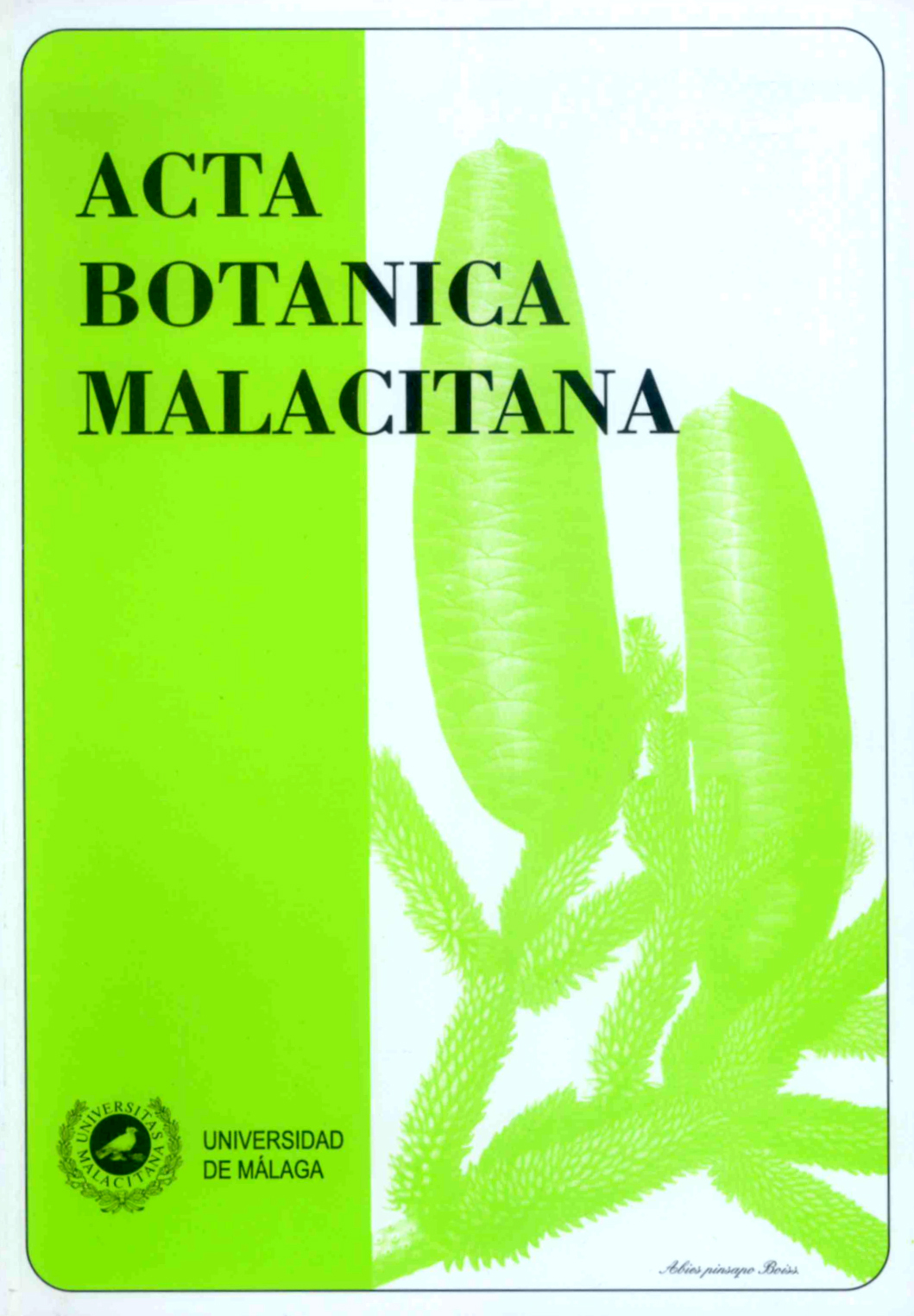Estudios esporales en especies del grupo Blechnum penna-marina (Blechnaceae-Pteridophyta).
DOI:
https://doi.org/10.24310/abm.v32i0.7029Abstract
ABSTRACT. Study of the spores of species of the Blechnum penna-marina group (BlechnaceaePteridophyta). The spores of eleven taxa of the Blechnum penna-marina group, B.asperum, B. blechnoides, B. corralense, B. fernandezianum, B. microphyllum, B. mochaenum subsp. achalense, B. mochaenum subsp. mochaenum, B. mochaenum subsp. squamipes, B. penna-marina, B. spicant, and B. stoloniferum were studied with light, and scanning electron microscopes . Spores are monolete and ellipsoidal in all taxa, with macro-ornamentation predominantly among muriform types. Sporoderm consists of a psilate, rugulate, or more or less supperficially granulate exospore, and a rugate, rugulate, venulose-rugulate, fossulate-rugulate, cristate-reticulate perispore. An exception are B. fernandezianum spores, with psilate perispores that bear orbicules. The perispore is a stratified, rather complex wall formed by three strata of different thickness and morphology: an outer continuous stratum, which bears the elements of the sculpture, a middle stratum which is alveolate, foliose or bear pillar-like elements, and a very thin, not clearly defined inner stratum. Blechnum mochaenum subsp. mochaenum and B. penna-marina showed larger spores in some specimens, a condition that may be related with different ploidia. Macro-ornamentation and morphology of the perispore of some taxa is also found in species of other groups of Blechnum. Performed studies suggest that spore characters do not define a particular group but the taxa, which is considered a new promising perspective for the systematic of the whole genus.
Key words. Blechnaceae, Blechnum, B. penna-marina group, spores, morphology, systematics
RESUMEN. Estudios esporales en especies del grupo Blechnum penna-marina (BlechnaceaePteridophyta). Las esporas de once taxones del grupo B. penna marina, B. asperum, B. blechnoides, B. corralense, B. fernandezianum, B. microphyllum, B. mochaenum subsp. achalense, B. mochaenum subsp. mochaenum, B. mochaenum subsp. squamipes, B. penna-marina, B. spicant y B. stoloniferum se estudiaron con microscopio de luz y electrónico de barrido. Las esporas son monoletes y elipsoidales en todos los taxones, con macro-ornamentación predominantemente muriforme. El esporodermo consiste de un exosporio psilado, rugulado o con superficie granular y un perisporio rugado, rugulado, venuloso-rugulado, fosulado-rugulado o crestado-reticulado. Una excepción son las esporas de B. fernandezianum, con perisporios psilados con orbículas. El perisporio es estratificado, con capas de diferente morfología y espesor: una capa externa continua, que soporta los elementos de la escultura, una media, alveolar, foliosa o con elementos columnares y una interna muy delgada que no siempre se distingue claramente. Algunos ejemplares de B. mochaenum subsp. mochaenum y B. penna-marina mostraron esporas más grandes en algunos ejemplares, lo que podría relacionarse con diferentes niveles de ploidía. La macro-ornamentación de las esporas y la morfología de las capas observadas en algunos taxones se encuentra también en esporas de otros grupos del género. Los estudios llevados a cabo sugieren que los rasgos esporales no definen un grupo particular sino taxones, una conclusión que abre perspectivas prometedoras para la sistemática del género.
Palabras clave. Blechnaceae, Blechnum, grupo B. penna-marina, esporas, morfologia, sistemática
Downloads
Metrics
Downloads
Published
How to Cite
Issue
Section
License
All information related to the licensing of published works in Acta Botanica Malacitana and copyright can be found in our Editorial Policy.







1.png)
